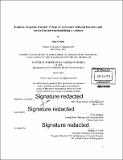| dc.contributor.advisor | Neal Hartman. | en_US |
| dc.contributor.author | Credoz, Jean | en_US |
| dc.contributor.other | Sloan School of Management. | en_US |
| dc.date.accessioned | 2016-09-30T19:34:32Z | |
| dc.date.available | 2016-09-30T19:34:32Z | |
| dc.date.copyright | 2016 | en_US |
| dc.date.issued | 2016 | en_US |
| dc.identifier.uri | http://hdl.handle.net/1721.1/104538 | |
| dc.description | Thesis: S.M. in Management Studies, Massachusetts Institute of Technology, Sloan School of Management, 2016. | en_US |
| dc.description | Cataloged from PDF version of thesis. | en_US |
| dc.description | Includes bibliographical references (pages 51-52). | en_US |
| dc.description.abstract | This study is intended to provide a framework of questions, for a manager or an organization, in order to overcome cultural barriers and succeed in internationalizing a young venture. My objective is to focus on young Internet ventures with innovative, easily replicable and scalable business models in the process of establishing a global presence while leveraging and nurturing local differences. My observations seem to highlight 3 successive steps to successfully enter a geographically new market: a first phase of exploration (where a team is often on the ground mapping the cultural differences, studying the trends, deciding what the best approaches to entrance are) a second phase of expansion (where the company formalizes its operations in the new country, decides the structure to give to the new entity and deals with challenges such as adapting its product or service to local needs and tastes) and finally a phase of extension (where speed is of essence, the company is trying to achieve a network effect and growth while making sure the skills gained through the new market entry will be replicable and reusable for other historical markets). I would like to study in detail the 3 highlighted steps; each time providing a list of questions a company should seek to answer. For each step I will study the particular strategic decision of one growing venture (Spotify exploring Japan, Airbnb expanding in China and Uber extending its reach in South East Asia) so as to illustrate how a given company chose to answer these questions. | en_US |
| dc.description.statementofresponsibility | by Jean Credoz. | en_US |
| dc.format.extent | 52 pages | en_US |
| dc.language.iso | eng | en_US |
| dc.publisher | Massachusetts Institute of Technology | en_US |
| dc.rights | M.I.T. theses are protected by copyright. They may be viewed from this source for any purpose, but reproduction or distribution in any format is prohibited without written permission. See provided URL for inquiries about permission. | en_US |
| dc.rights.uri | http://dspace.mit.edu/handle/1721.1/7582 | en_US |
| dc.subject | Sloan School of Management. | en_US |
| dc.title | Explore, expand, extend : 3 steps to overcome cultural barriers and succeed in internationalizing a venture | en_US |
| dc.title.alternative | Three steps to overcome cultural barriers and succeed in internationalizing a venture | en_US |
| dc.type | Thesis | en_US |
| dc.description.degree | S.M. in Management Studies | en_US |
| dc.contributor.department | Sloan School of Management | |
| dc.identifier.oclc | 958300768 | en_US |
